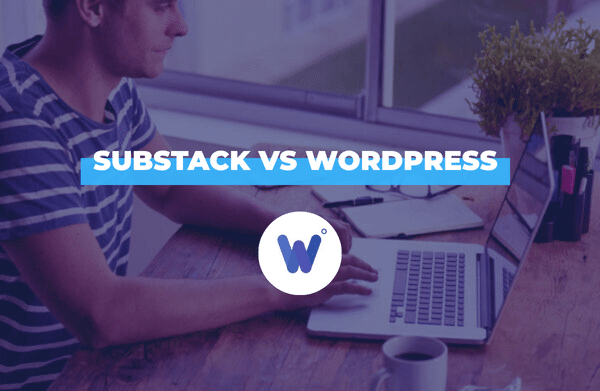
If you’re a writer who wants to start your own blog, you’ve got many decisions ahead of you. But the most foundational decision you’ll ever make is which publishing platform to use.
With literally thousands of content management systems (CMSs) out there, this might seem like a daunting task. If you ask around, one in three people will probably answer WordPress. However, if you´re here reading this post, it’s because you’ve also heard about Substack.
The heat is on in the Substack vs WordPress debate.
On one side, you have WordPress, the established, do-anything giant of the web. On the other side, you have a sleek, focused challenger built specifically for writers to connect with and monetize their audience directly.
There’s a lot to think about when choosing between these two platforms, and he right choice depends entirely on your goals. That’s why we’re moving beyond surface-level comparisons to provide a definitive guide for marketers and SEOs.
By the end, you will have the clarity to choose the right platform that not only fits your workflow but also actively accelerates your business goals.
The following table gives you a quick overview of how these two competing platforms compare across different features
| Feature | Substack | WordPress |
|---|---|---|
| Best For | Writers, journalists, and creators focused on subscription content | Virtually any type of website, especially for those prioritizing audience growth via SEO |
| Ease of Use | Extremely easy, with a minimalist content editor | Moderate learning curve due to its vast options and settings |
| SEO Approach | Basic, with some control over meta titles | Unmatched control via powerful third-party SEO plugins |
| Monetization | Native, built-in tools for paid subscriptions | Requires third-party plugins like MemberPress or Restrict Content Pro |
| True Cost Model | Free, but includes a 10% cut + payment processing fees | Low entry cost, but it grows with your hosting service and premium plugins |
| Flexibility | Focused and streamlined; less flexible by design | Infinitely flexible and customizable with themes and plugins |
Before we dive deep, let’s establish what these platforms are. Understanding their core philosophies is the first step to making the right choice, and it’s especially important to clarify the most common point of confusion in the WordPress world.
Substack is a modern, all-in-one newsletter platform designed with a singular focus: making it incredibly simple for writers to launch a publication and get paid. In fact, it markets itself as a “new economic engine for culture.”
Substack combines a simple website, a blog, and a powerful email marketing service into one elegant package.
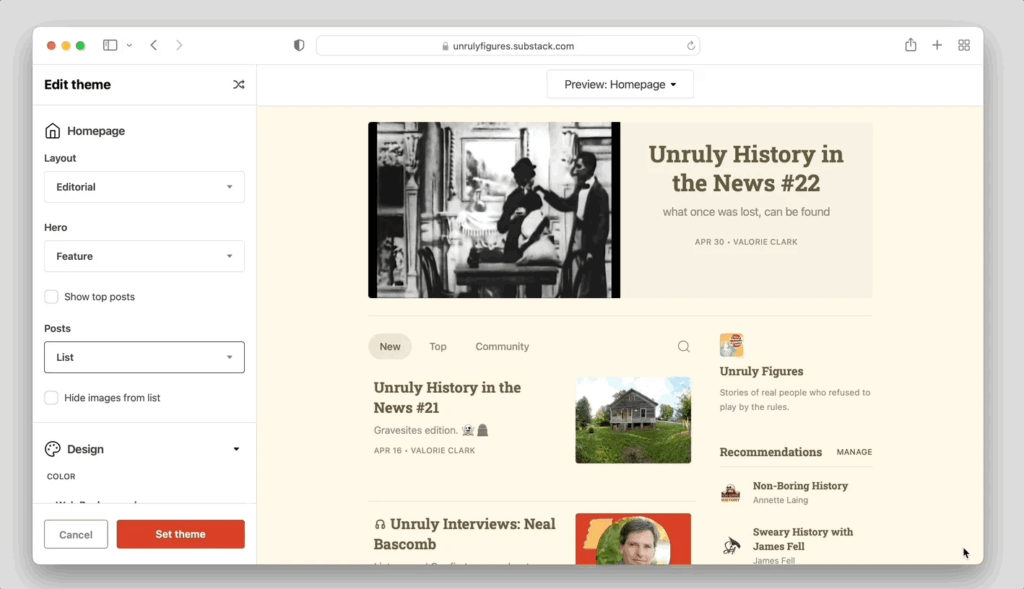
The entire user experience is built to remove technical friction. You don’t worry about hosting, security, or updates; you just write and build a direct relationship with your readers.
This is where many people get tripped up. WordPress isn’t just one thing; it comes in two distinct forms that offer vastly different levels of control and responsibility.
When people talk about WordPress, they’re usually talking about WordPress.org, the free, open source CMS software and website builder you can download and install on your own web hosting account.

This version gives you 100% control, freedom, and ownership over every aspect of your site. It also gives you access to thousands of themes, plugins, and customization options, which is why it’s so popular.
In contrast, WordPress.com is a paid, all-in-one managed hosting service that uses the WordPress CMS. It’s the WordPress solution for those who want the power and flexibility this platform offers, but don’t want to cope with the learning curve and responsibility of running, securing, and maintaining a website.
Though far from being the leading hosting provider on the internet, WordPress.com hosts 1.04% of all websites (source: HostAdvice).
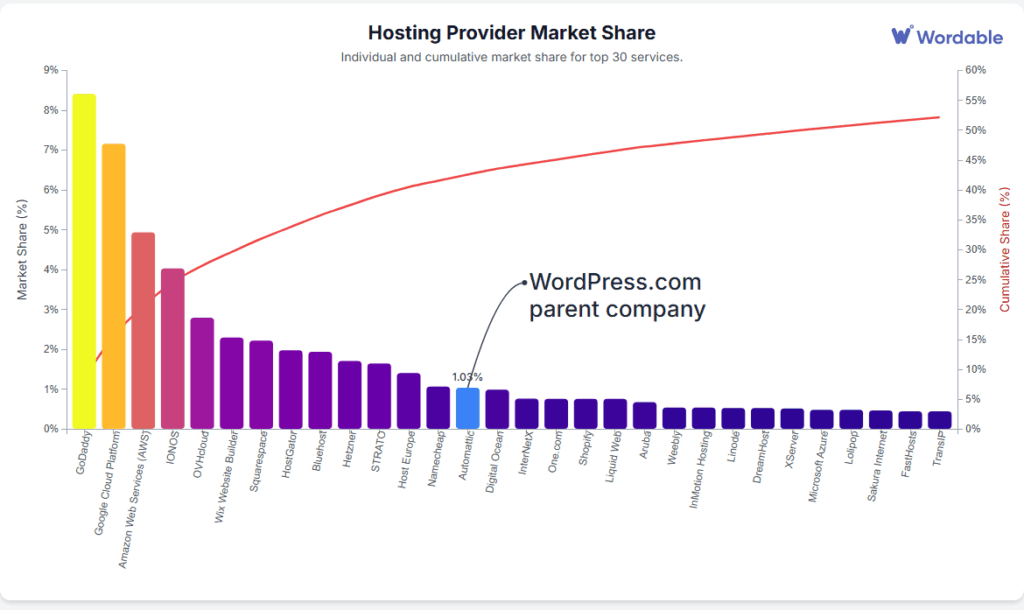
As you’ll learn below, this translates to over two million sites, not something to scoff at.
However, this convenience comes with limitations, especially on lower-tier plans. For a fair comparison with Substack’s managed model, we’ll primarily focus on the self-hosted WordPress.org, as it represents the platform’s true potential.
Now that you have a clearer view of what we’re comparing, let’s start our Substack vs WordPress showdown.
For marketers, SEOs, and SEO-focused writers, this is the most critical strategic difference.
How you attract and grow your audience is fundamentally shaped by the platform you choose. The Substack vs WordPress decision here is a choice between two entirely different growth philosophies.
| Feature | Substack | WordPress |
|---|---|---|
| Primary Growth Lever | Email newsletters & on-platform network | Organic search (website traffic) |
| Discovery Model | Social sharing & a built-in referral program | Search engine rankings & content marketing |
| Analytics Tools | Basic built-in stats | Full integration with Google Analytics 4, etc. |
On Substack, your email list is your platform. The platform is engineered to help you grow that list through direct engagement and on-platform network effects, not by chasing search engine rankings.
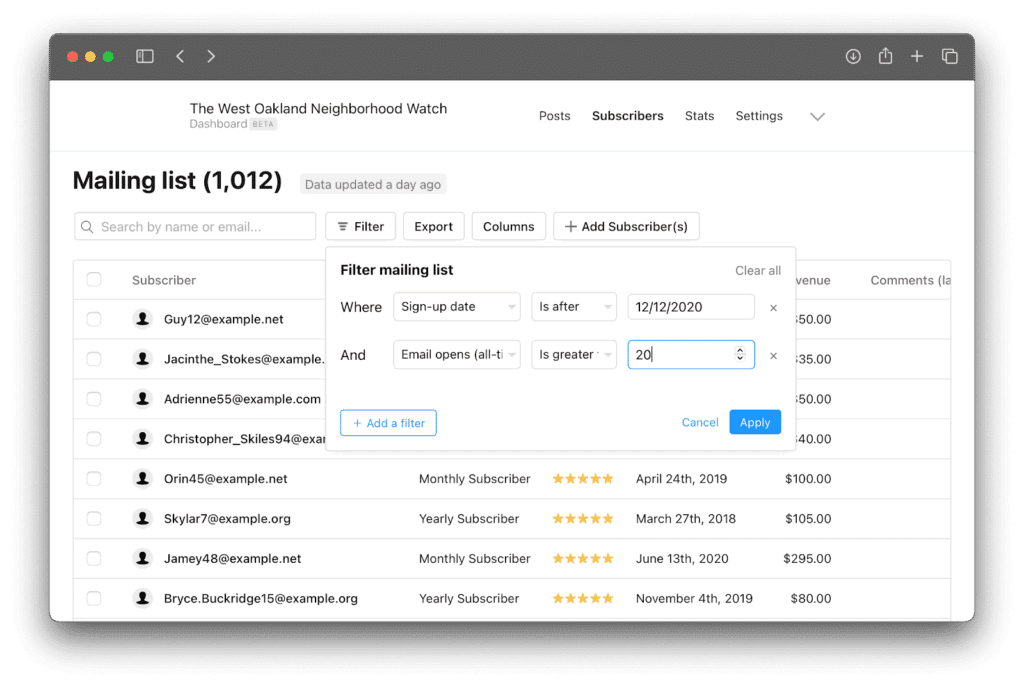
On Substack, growth primarily comes from three channels:
This creates a powerful, self-contained ecosystem where an engaged audience can easily discover high-quality writing. However, you’re largely dependent on that ecosystem for new readers.
WordPress, on the other hand, is built to dominate the open web. Its core structure is inherently search-engine-friendly, but its true power is unlocked through its incredible ecosystem of third-party SEO plugins.

Plugins like Rank Math and Yoast SEO give you granular control over every aspect of your search engine optimization. You can:
This level of control is non-negotiable for any business where organic search is a key pillar of its content marketing strategy.
How you make money from your content is another area where these platforms diverge dramatically. Substack offers a beautifully simple, single path to revenue, while WordPress provides a universe of options that you can assemble as you see fit.
| Feature | Substack | WordPress |
|---|---|---|
| Primary Method | Paid subscriptions | Anything: Ads, affiliate, products, memberships |
| Setup Simplicity | Extremely high; built-in | Moderate to complex; requires plugins |
| Other Revenue | Limited | Almost limitless |
Substack’s core value proposition is its frictionless monetization. Within minutes of creating your account, you can connect a Stripe account and start offering membership subscriptions.
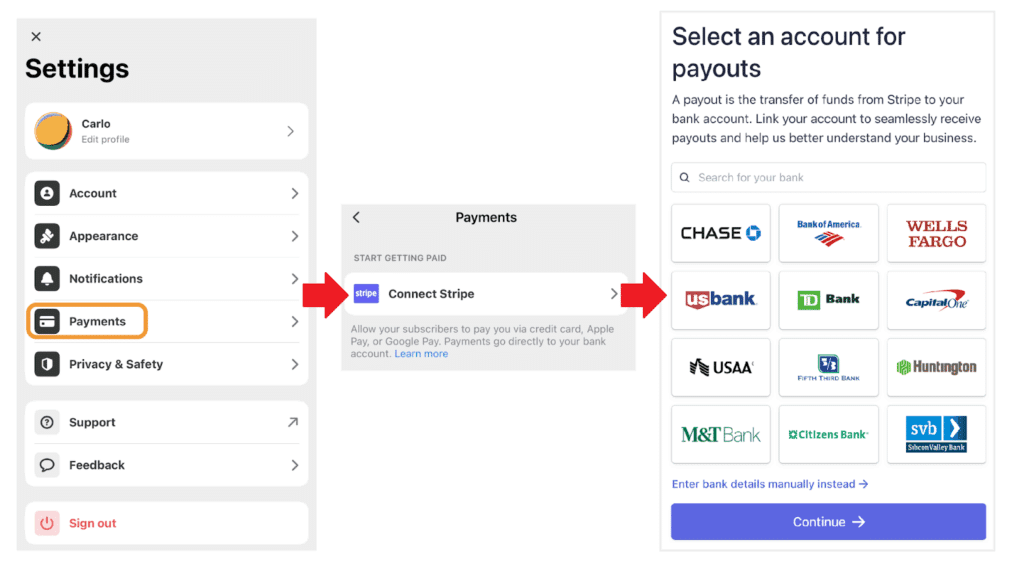
You can easily gate content for paying members, turning your publication into a full-fledged membership site. The platform handles all the billing and user management for you.
In exchange for this simplicity, Substack takes a 10% subscription fee, and you’ll also have a standard payment processing fee from Stripe on top of that. While it’s true that nothing of value is truly free, these fees can add up for large audiences, making other subscription-based publishing platforms like Ghost a better option.
Read our Ghost vs WordPress comparison post to learn more.
Let’s say you grow a massive subscriber base from your rock-star content alone using Substack. You made it!
But the value in your list of subscribers goes beyond consuming content. You can monetize a large following in other ways, but Substack isn’t built for that. With WordPress, you’re in complete control of your monetization strategy. You can build a diversified business that isn’t reliant on a single source of income.
Powerful membership plugins like MemberPress or Restrict Content Pro can replicate Substack’s functionality and often do much more. Beyond that, you can:
This modular approach offers incredible power, but it also makes WordPress much more complex. That’s why a CMS guide comes in handy for beginners.
Beyond features, the day-to-day experience of managing your platform is a critical, practical difference. The choice here comes down to whether you want a service that handles everything for you or a system that gives you the keys to the entire engine.
| Feature | Substack | WordPress |
|---|---|---|
| Setup Time | Minutes | Hours to Days |
| Ongoing Maintenance | None (fully managed) | User’s responsibility (updates, security) |
| Support Options | Formal support desk & writer community | Vast developer community & support forums |
Substack is built on the principle of radical simplicity. From the moment you sign up, your only job is content creation. There are no plugins to update, no security patches to worry about, and no hosting configurations to manage; Substack handles all automatic updates and security behind the scenes.
This hands-off approach is its greatest strength for writers who want to avoid any technical burden and focus exclusively on their craft.
Running a self-hosted WordPress site means you’re the site owner, and with that title comes responsibility. You’re in charge of choosing a hosting service, managing plugin and theme updates, and ensuring your site remains secure (though many managed hosts help with this).
While this involves a steeper learning curve, it’s not necessarily a burden—it’s the trade-off for complete control. The vast WordPress ecosystem means you’re never truly alone, with endless resources available through official documentation, community support forums, and sites like Stack Overflow.
Besides functionality and customization options, the biggest difference between the two platforms is their ecosystems and adoption.
| Feature | WordPress | Substack |
|---|---|---|
| Market Share (CMS) | Between 24% and 43% of all websites | Approximately 0.049% of active websites |
| Number of Sites | Around 50 million | Around 100,000 |
| Ecosystem & Support | Massive user base, thriving developer community | Much more niche, with a significantly smaller ecosystem |
No matter how you measure it, the difference in ecosystems is stark.
According to BuiltWith data, which covers 160 million websites, WordPress is the undisputed leader in the CMS space, accounting for 24.40% of all live websites and 34.14% of all active websites that use a CMS (many don’t).

Other sources, such as W3Techs, put WordPress’s market share even higher, at 43% of all websites as of early 2025.
This massive user base for WordPress supports a thriving developer community and an ecosystem of over 60,000 plugins, meaning there’s a tool and support for nearly any function you can imagine
Substack is a much more niche CMS, representing just 0.049% of active websites (source: BuiltWith).
But how do these numbers translate into the actual size of each ecosystem?
According to the most recent Web Server Survey by Netcraft, there were almost 1.25 billion websites on the Internet in June 2025, of which 201 million are live.

That means we can put the number of WordPress vs Substack sites at around 50 million to 100,000, respectively. That’s 500 WordPress websites for every single Substack site. So you’re likely to find fewer online resources and less community support for Substack compared to WordPress, if you ever run into an issue.
That said, since it’s a managed service, you’re also less likely to run into any issues you might need to handle yourself.
So, after all that, which blogging platform should you choose?
There’s no single “best” answer, but there is a right answer for you, based on your team’s priorities, technical comfort level, and ultimate goals.
You should choose Substack if, first and foremost, you’re a writer, journalist, or content creator. It’s the perfect choice if you prioritize a beautiful writing experience and want the most direct, built-in path to launching a newsletter or membership site with zero technical overhead.
If you want technology out of the way so you can focus purely on creating great content and building a loyal community, Substack might be a good fit.
You should choose WordPress if you’re a business, agency, or individual building a long-term digital asset. It’s the superior choice if you need a highly customized, infinitely scalable website and value a limitless selection of tools and design options.
If SEO is a critical part of your growth strategy and you want the flexibility to build a diversified business with multiple revenue streams, WordPress provides the power and control you need.
Keep in mind that WordPress doesn’t have to be a technical battle for you as a writer. You can choose a managed hosting plan service like WordPress.com to handle the technicalities for you.
Also, if you’re already good at creating stunning content that not only flows beautifully with every word but also looks amazing using Google Docs, you can bypass the hardships and publish to WordPress with one click using a tool like Wordable.
In the end, the endless Substack vs WordPress debate points to one truth: the best choice is the one that aligns with your goals, skills, and business model.
Whether it’s the focused publishing power of Substack or the boundless creative freedom of WordPress, the right tool is the one that empowers you to connect with your audience and grow your brand.
If you’ve decided the power and flexibility of WordPress is right for you, don’t let a clunky content workflow slow you down. Many high-volume content teams prefer to draft in Google Docs but get stuck in the copy-paste nightmare of moving to the WordPress Gutenberg editor.
See how Wordable can save your team hours every week by automating your publishing process from Google Docs to WordPress with a single click.